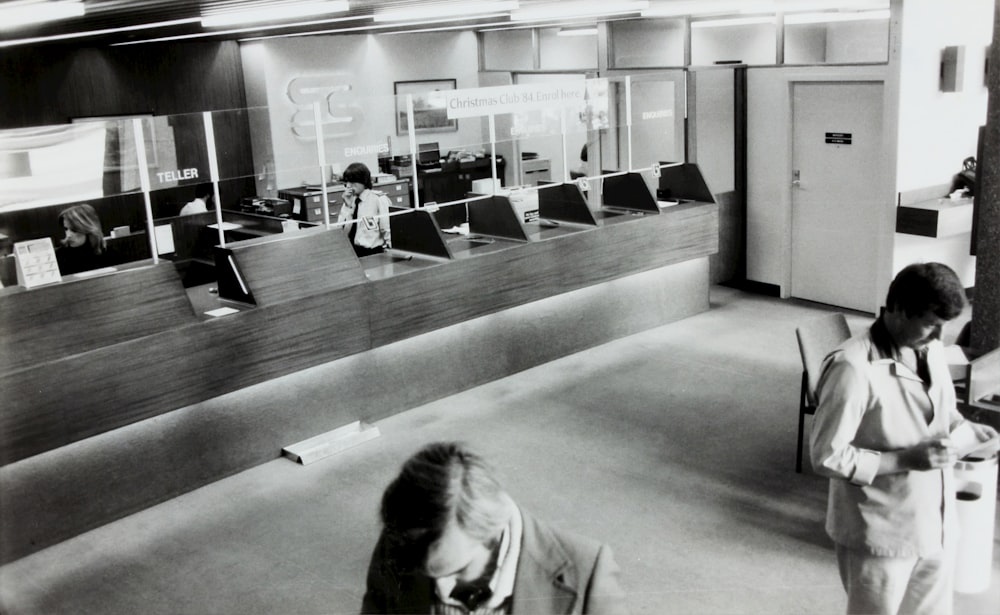Discovering your overdrawn bank account has been sent to collections can feel like a punch to the gut. You’re not alone; many face a stressful situation, but there’s a path forward.
Don’t let panic set in—there are steps you can take to navigate this financial hurdle. Understanding your options and taking swift action can make all the difference in resolving the debt and safeguarding your credit score.
Stay tuned as we explore the actionable strategies for addressing a bank account in collections. It’s time to regain control of your finances and move towards a more secure financial future.
Understanding the Situation
When you’re faced with an overdrawn bank account that’s been sent to collections, it’s crucial to grasp the gravity of the situation. Banks typically report an overdrawn account to collection agencies if a significant period has elapsed without addressing the negative balance. This can take a toll on your credit score and make it challenging to open new bank accounts in the future.
Immediate actions are necessary to prevent further damage. First, confirm the debt by requesting a written notice from the collections agency. This document should detail the amount owed and the original creditor. Verify all information thoroughly to ensure the claim is legitimate and the debt amount is accurate.
Understand your rights under the Fair Debt Collection Practices Act (FDCPA), which protects consumers from abusive debt collection practices. Collection agencies are not permitted to harass you and must adhere to specific guidelines when communicating about the debt.
Keep track of all correspondence and maintain records of your communication with the bank and the collection agency. Documentation could be vital should there be any disputes or if you decide to negotiate a settlement. Remember, knowledge is power; in this case, navigating the collection process and protecting your financial health is essential.
Assessing the Debt
Once you’ve confirmed that your overdrawn bank account is in collections, it’s critical to assess the debt thoroughly. You’ll want to ensure the amount claimed is correct and that no erroneous charges inflate your debt. Start by comparing the collections notice with your bank statements. Look for any discrepancies in the amounts or dates listed.
Remember, you can dispute any part of the debt you believe is inaccurate. If you find errors, you must gather evidence and contact the collection agency to rectify these issues. Erroneous reporting can impact your credit score, so it’s best to address these immediately.
Understanding the debt breakdown can also give you an edge in negotiations. Knowing exactly what you owe, including any additional fees or interest, offers a solid foundation for starting discussions.
- Request itemization of your debt.
- Verify each charge
- Note any discrepancies
Documentation is crucial during this phase. Ensure you convert all verbal communications into written confirmations and keep meticulous records of all interactions and agreements. This paper trail isn’t just for your peace of mind; it’s a vital component should the need arise to challenge the debt legally.
Communicating with the Bank
When an overdrawn account goes into collections, you must initiate dialogue with the bank to understand their perspective. Contact your bank at once to discuss the overdraft situation. Engage early and express your willingness to resolve the debt, which may lead to more flexible arrangements.
Ask for a breakdown of the overdraft charges, including daily fees and late penalties. This allows you to cross-reference with the itemized debt you’ve already gathered. Confirm whether the bank reported your account to credit bureaus, and if so, request details on how to rectify the record once you settle the debt.
When dealing with bank representatives, record the conversation details, such as the representative’s name, the time of the call, and the nature of the agreement or advice given. If you agree on a payment plan or a settlement, insist on having it documented in writing.
Remember that even if your account is in collections, you may still be able to negotiate with your bank. They might offer options like a payment plan or even a reduction in the debt in some cases. Be aware of any offers that extend the repayment term but accrue additional interest, as this could further inflate your debt.
Review the Fair Debt Collection Practices Act (FDCPA) to stay informed about your rights during collections processes. Knowing your rights can leverage conversations and prevent unfair treatment or unlawful bank collection practices.
Negotiating a Payment Plan
Negotiating a payment plan can be viable when faced with the challenge of an overdrawn bank account in collections. Your first step should be to outline your current financial situation clearly. This means preparing a detailed budget to identify how much you can pay monthly for the debt without compromising your essential living expenses.
Propose a realistic payment plan based on your financial capabilities. When you approach your bank, be upfront about your financial constraints. Explain your dedication to settling the debt and present your proposed plan. Your transparency can work in your favor, as banks often prefer to collect some amount rather than none.
Keep in mind that negotiation is a two-way street. Banks are under no obligation to accept your first offer. You may need to prepare for a counteroffer counteroffer bu, but be firm in your negotiations. Banks may also require proof of your monthly income and expenses, so have those documents ready to present.
Remember, all agreements should be in writing. If your bank agrees to a payment plan, ensure that you receive the documented terms and conditions of the contract. This should include the monthly payment amount, the total number of payments to be made, and any possible impact on your credit report. Having this documentation will protect you should any disputes arise in the future.
Exploring Debt Settlement Options
Exploring debt settlement may be a viable route when your overdrawn bank account lands in collections. Debt settlement involves negotiating a lump-sum payment that is less than the total amount owed. You’ll need to explain why you cannot repay the total amount and show that you’re offering the most you can afford.
Start by contacting the collections agency to initiate negotiations. It’s crucial to Communicate your intention to settle the debt and propose a reasonable amount you can pay immediately. Here are the typical steps you’ll take:
- You’ll Your Finances: Carefully examine your savings and budget to determine the maximum amount you can offer as a one-time payment.
- Initial Contact: Reach out to the collections agency with your proposal and explain your financial hardship.
- Negotiation: Be prepared for counteroffers. Counteroffers, and be open to discussion while sticking to what you can afford.
- Get It in Writing: Once an agreement is reached, ensure both parties document and sign all the terms before paying.
Remember, debt settlement might impact your credit score, but it can also relieve the overwhelming pressure of collections. Research the implications or consult a financial advisor to understand how this option fits your overall debt management strategy.
Rebuilding Your Credit
After resolving your overdrawn bank account and navigating collections, it’s time to move on to the next crucial step: rebuilding your credit. Your credit score may have taken a hit, but don’t worry, don’t get your strategies at your disposal to get it back on track.
First, make sure you’re paying your bills on time. Payment history is a significant factor in your credit score, accounting for 35% of its composition. Setting up automated payments through your bank can help you stay on due dates and avoid late fees.
Next, check your credit report for any inaccuracies affecting your score negatively. You’re entitled to a free credit report from each of the three major credit bureaus—Experian, Equifax, and TransUnion—once every 12 months. Dispute any errors you find with the credit bureau directly. Here’s a quicHere’se showing the potential effects of errors on your credit report:
| Impact | Potential Issue | Solution |
|---|---|---|
| Negative Credit Score | Inaccurate debt listings | Dispute with bureaus |
| Access to New Credit | Incorrect account status | Report and correct |
| Interest Rates | Wrong personal information | Verify and update |
Another key tactic is reducing your credit utilization ratio. This ratio is the amount of credit you use compared to your total available credit. Ideally, it should be below 30%. You can do this by paying down existing debts and not taking on new ones.
Consider getting a secured credit card if you’re getting approved for traditional credit cards. With a secured card, you make a deposit that serves as your credit limit, thereby minimizing the risk for the lender while you build or rebuild your credit.
Lastly, diversifying your credit mix can positively impact your credit scores. This means having various credit types, such as credit cards, retail accounts, installment loans, finance company accounts, and mortgage loans. But be cautious; only take on credit you can afford to manage responsibly.
Remember, rebuilding credit is a marathon, not a sprint. Stay patient, keep your spending in check, and maintain good financial habits. Your credit score will reflect these efforts over time, opening up new opportunities for you in the future.
Conclusion
Facing collections due to an overdrawn bank account can be daunting, but there’s a clue to recovery. Taking control of your finances and addressing the issue head-on will solve the immediate problem and pave the way for a healthier financial future. Remember, it’s about contestants and positive actions. Stay diligent with your payments, monitor your credit score, and manage your credit wisely. With time and effort, you’ll rebuild your credit and regain financial stability. Stay the course; your future self will thank you.
Frequently Asked Questions
How can I rebuild my credit after an overdrawn bank account?
Rebuilding credit after an overdrawn account involves consistently paying bills on time, monitoring your credit reports for errors, and keeping credit card balances low relative to credit limits.
What steps should I take if my overdrawn account has gone to collections?
If an account has gone to collections, first verify the debt. Then, either pay it off or negotiate a payment plan. Lastly, ensure the collection is updated correctly on your credit report as paid or settled.
Is checking my credit report important?
Yes, checking your credit report regularly is crucial to identify any inaccuracies or fraudulent activities that could hurt your credit score, allowing you to address them promptly.
How does a secured credit card work to rebuild credit?
A secured credit card requires a cash deposit as collateral, which generally becomes the credit limit. Responsible use of a secured card, like timely payments, can help rebuild credit over time.
Why is it important to diversify my credit mix?
Diversifying your credit mix can be beneficial because having different types of credit, such as installment loans and revolving credit, can positively affect your credit score, as it shows you can handle various credit types responsibly.


